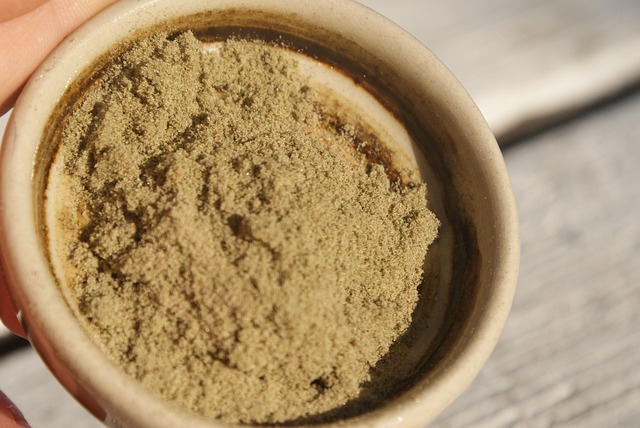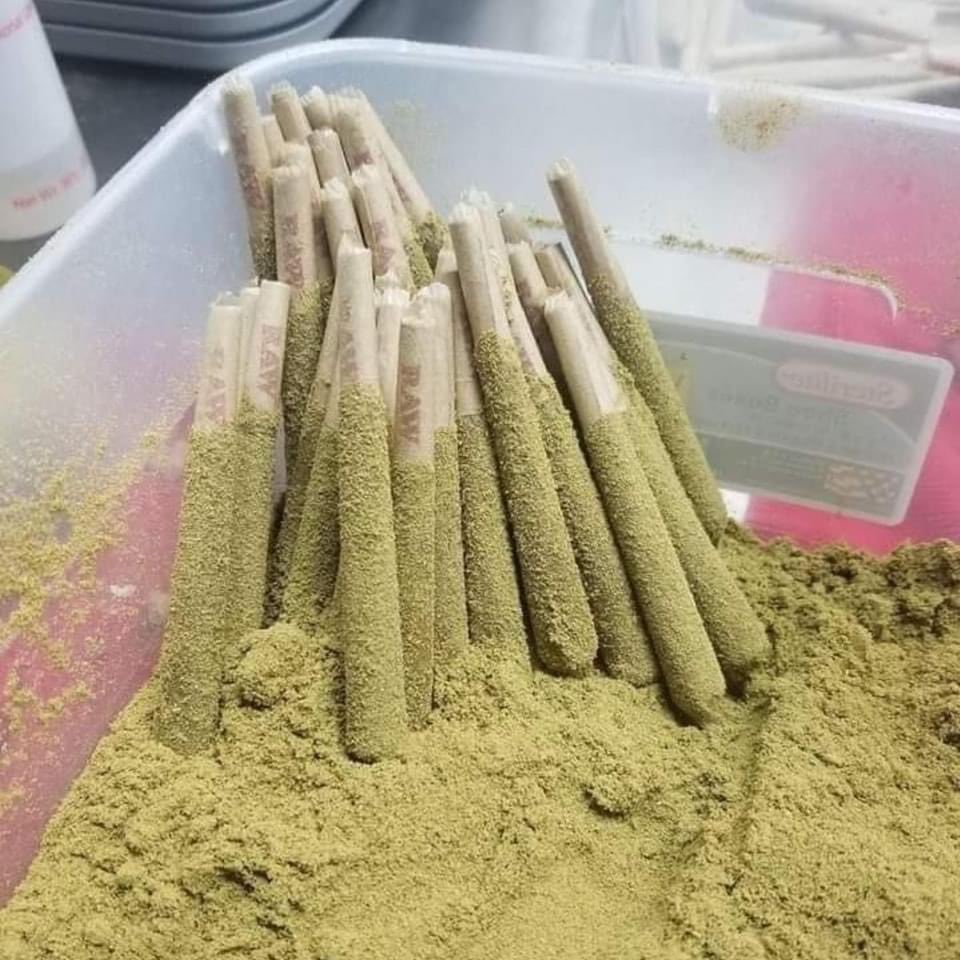Learn how to use kief, often regarded as one of the most potent and versatile products of the cannabis plant. Kief has earned its place in the rituals and innovations of cannabis enthusiasts throughout history. Sometimes spelled “keef” or called “dry sift,” these tiny resinous crystals contain much of the plant’s cannabinoid and terpene concentration.
Their shimmering size, ranging from a powdery dust to small, sticky grains, belies their potency and opens up a world of possibilities for both medical and recreational consumers. From topping a bowl to pressing into hash or infusing edibles, kief invites creativity and respect.
This guide will walk you through everything you need to know about kief and how to use it.
Table of Contents
What Is Kief?
Kief refers to the loose collection of trichomes that naturally separate from cannabis flower. Trichomes are minuscule, mushroom-shaped glands appearing on the surface of mature buds and surrounding leaves. To the eye and touch, they form the plant’s crystals; that shimmering, sticky, and aromatic layer you’ll notice on high-quality flower.
Trichomes house the plant’s highest concentrations of THC, CBD, and other minor cannabinoids, as well as terpenes, the aromatic compounds responsible for unique cannabis scents. When these break off through grinding, handling, or sifting, they’re called kief.
Compared to standard ground cannabis flower, kief is much more potent, often containing 40–60% THC, sometimes higher if processed well. That means a little bit of kief goes a long way in any consumption method.

Thanks to its flavor, potency, and flexibility, kief has been part of global cannabis traditions for centuries, used as a staple in making hashish and, in modern times, as a premium addition to everyday cannabis routines.
How to Collect Kief
Before exploring the many ways you can use kief, it helps to understand how most users collect it. The easiest method involves a three- or four-chamber grinder with a mesh screen on the bottom layer. As you grind your cannabis flower, small trichomes fall through the screen, collecting in the bottommost chamber where you can later scrape them out with a kief scraper. This daily process yields enough kief over time to enjoy enhanced bowls, joints, or experiments with extraction.
For those growing or processing larger amounts, specialized sifting devices or dry sift boxes use fine mesh screens to agitate and separate trichomes gently. No plant matter should be part of kief. For the highest purity, only the tiniest, fully intact trichomes make it through the screen; any visible green material signals excess plant matter and lesser quality.
In dispensaries or commercial settings, kief may also be collected during trimming using mechanical shakers or even dry ice, resulting in large-batch, super-pure kief with a unique character.
Kief is often golden, tan, or slightly green, depending on the strain, freshness, and sieving technique. With collection complete, you gain access to concentrated cannabis that can dramatically enhance your experience.
Traditional and Modern Uses for Kief
Kief’s uses span the world of cannabis, both old and new. Here are the primary methods for enjoying kief, detailed for clarity and safety.
1. Sprinkling Kief on Bowls as Topping
Perhaps the most traditional use of kief involves simply sprinkling a small pinch atop a packed bowl of ground flower. This is called topping but others call it crowning, and it transforms an ordinary session into something special.
As the flame ignites the kief, the bowl bursts with extra potency and richer flavor. This method is perfect for those who want to supplement regular flower with added intensity, ideal for social situations, pain relief, or celebrating special occasions.
One tip: add kief under a thin top layer of flower to slow down burning and make for smoother hits.
2. Rolling Kief Into Joints and Blunts
Kief fits naturally in hand-rolled joints and blunts. Some enthusiasts mix kief into ground flower before rolling; others “twax” a joint by dampening the outside of a finished roll with wax or oil, then rolling it in loose kief for a potent coat.
Twaxed joints burn slower, hit harder, and often taste better, thanks to the density of terpenes and cannabinoids in the kief. When rolling, take care not to use too much as kief’s powdery texture can restrict airflow, making joints hard to draw if overpacked.

3. Making Hash from Kief
Historically, kief formed the basis for hashish, the world’s oldest concentrated cannabis product.
Hash is made by compressing and gently heating kief to stick the trichomes together, often using a press or simple hand-rolling. Pressed hash can be heated and crumbled atop a bowl or joint, smoked in a pipe, or vaped in concentrates-ready devices.
It preserves the unique flavor of kief while providing a more manageable and less dusty form. Some home hash-makers fold kief in parchment, apply pressure with a warm glass bottle, and create finger has or pressed kief in minutes. The result is compact, easy to store, and great for travel.
4. Vaping Kief
Vaporizers, especially those designed for herb or concentrates, handle kief well. You can layer a pinch of kief on top of ground flower inside the chamber or use specialized concentrate pads if your device supports oils and solids.
Vaporizing kief releases the full bouquet of its terpenes and cannabinoids without burning plant material, making for a flavor-rich, smooth, and potent experience. Clean your vape more often, as kief, when melted, can leave sticky residue.
5. Cooking and Infusing Edibles
Thanks to its potency and texture, kief excels as a basis for homemade cannabis edibles and infusions. The first step is decarboxylation, which involves gently heating the kief, usually in an oven at about 245°F for 30–45 minutes, to activate the THC.
After decarboxylation, kief dissolves readily in fats such as butter, coconut oil, or cream during low, slow infusions. This versatile infusion can be used for baking cookies, brownies, candies, sauces, or even homemade tinctures.
Because kief packs such a punch, doses must be measured carefully. Start small when experimenting to avoid overconsumption.
6. Creating Moon Rocks
Moon rocks are infamous in the cannabis world for their sheer strength. They’re created by taking dense nugs of cannabis flower, coating them with hash oil, then rolling them in a thick layer of kief.
This results in nuggets three or four times as potent as regular flower, delivering an unforgettable experience.
Moon rocks require some preparation and are best enjoyed in pipes or bongs, as their sticky nature can clog grinders and papers. Approach moon rocks with caution, as the high can be overwhelming for new or low-tolerance users.
7. Making Rosin or Other Concentrates
Rosin is a solvent-free cannabis concentrate made by pressing flower or kief between heated plates, extracting cannabinoids and terpenes as a sticky, sap-like material. Kief-based rosin is sought after for its purity, flavor, and clarity.
With home rosin presses now affordable and compact, many users experiment with pressing their accumulated kief into high-quality dab concentrates. These can be dabbed in a rig, added to vapes, or incorporated into edibles.
8. Kief in Cannacaps or Capsules
Some patients need discreet dosing and consistent effects. To that end, kief can be decarboxylated and mixed with coconut oil or another carrier fat, then filled into empty gel caps.
These capsules enable accurate, long-lasting oral consumption without sugar or food allergies getting in the way.
Storing and Handling Kief
Kief’s delicate trichomes deteriorate if exposed to air, light, moisture, or heat for extended periods. For safe storage, use a dark, airtight glass container kept in a cool drawer or cupboard.
Silica gel packs outside the kief container can help prevent humidity damage, as excess moisture encourages mold. If you press your kief into hash, store each chunk in parchment for added longevity. Always use clean tools to prevent contamination.
Over time, kief’s sticky, resin-rich goods can clump. Gently break it up with a clean scraper or plastic tool as needed. Avoid metal tools if possible, as static can cause trichomes to cling and waste material.
Dosing and Safety
With kief’s elevated potency, you must does it responsibly to enjoy the experience. If you’ve never used kief, start with tiny amounts; a pinch or two. Then increase gradually.
Edibles made with kief warrant even more caution; always allow 1–2 hours for effects to settle before deciding on larger doses. While kief contains only what came from your original cannabis flower, concentration increases the risk for overconsumption, lightheadedness, or intense highs.
Side effects can include dry mouth, dry eyes, sedation, and, occasionally, anxiety or paranoia for sensitive users. Stick to a familiar strain’s kief for predictability.
Kief Through the Ages and in Modern Culture
Kief’s role in traditional cannabis-using societies is storied. In Morocco, Afghanistan, and Lebanon, kief was pressed into hash through sieving, hand-rolling, and pressing, forming the basis of the hash trade for centuries.
In North America, kief has evolved from a byproduct of grinding to an ingredient in edibles, vape pens, pre-rolls, and extracts throughout legal cannabis markets.
In today’s legal dispensaries, you can buy prepackaged kief by the gram or eighth, often labeled with strain and cannabinoid content. For many, saving and using kief represents a frugal, rewarding part of cannabis enjoyment—a bonus that accumulates over time, ready for days when you need an extra boost.
Conclusion
Kief embodies cannabis in concentrated form—pure, potent, and remarkably flexible in use. Whether you prefer to sprinkle it, roll it, vape it, cook it, press it, or store it for special occasions, kief offers a gateway to richer highs, fuller flavors, and deeper appreciation for the art of cannabis cultivation and consumption.
With this guide, you’ve learned how to collect, store, and use kief safely. Now you can make the most of your harvest or daily grind, joining a tradition that’s delighted cannabis lovers for generations.

